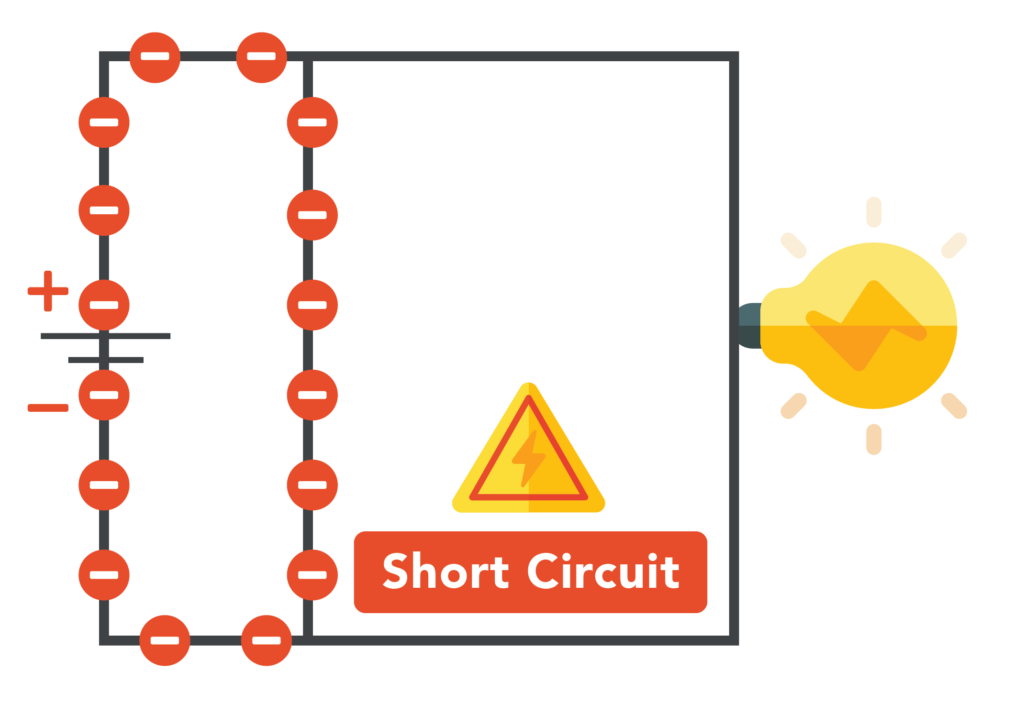Wondering if you have a short circuit in your home? If you have one breaker that trips frequently, there’s a good chance you have a short or overload in the circuit. But what’s a short circuit in the first place?
What is A Short Circuit and What Causes Them?
All circuits use pathways to send power from a panel to a service area. A short circuit happens when power diverts to a shorter pathway to get back to its source instead of the intended service area.
What exactly causes short circuits? Currents will naturally go down the path of least resistance, so loose or broken wires can create shorter paths. This prevents the current from reaching its destination and causes it to loop within the new shortened circuit. For example, currents are normally forced down a pathway through a rubber sleeve. If the rubber sleeve breaks or is damaged, the current can jump to metal or the nearest conductor. This phenomenon usually results in tripped breakers.

How to Find a Short Circuit in Your Home
If you think this is happening in your home’s electrical system, follow these steps find the short circuit:
- First, you’ll need a multimeter. Although this device checks for voltage, it can also check for continuity. By checking both ends of the wire for power, you can tell whether or not you have a short. Before testing, set your multimeter function to continuity mode.
- Take the negative probe (the black one) and place it on the end of the wire you want to check for continuity. Use the positive probe (the red one) on the other end of the wire and wait for a beep which signals continuity.
- If no beep occurs, the wire does not have power flowing all the way through it. If a beep does occur, check the screen on your multimeter for at least .3 ohms. If the number is smaller, you probably have a short.
Don’t be afraid to call one of our professionals at any time during this process, as wiring and electrical work can be dangerous if not done correctly. If you’ve found a short circuit in your home or suspect you have one, call Citywide Electric for a wiring inspection.


